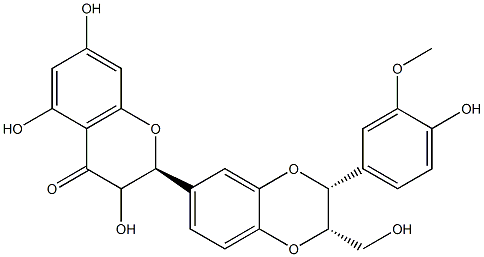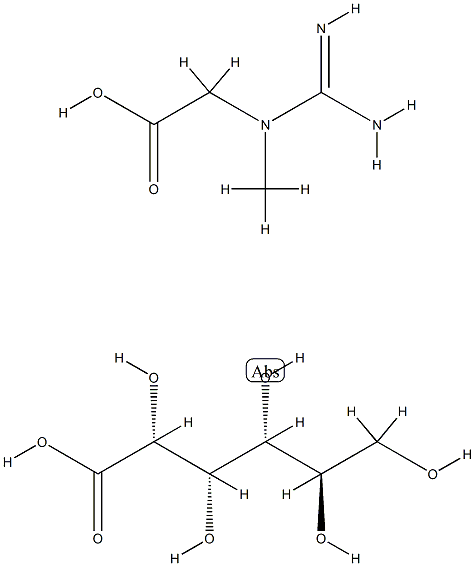Milk Thistle Extract
- CAS NO.:84604-20-6
- Empirical Formula: C25H22O10
- Molecular Weight: 482.43618
- MDL number: MFCD01776358
- EINECS: 283-298-7
- Update Date: 2024-09-18 17:23:03

What is Milk Thistle Extract?
Description
Milk Thistle Extract is prepared from the milk thistle. This plant belongs to the sunflower family and has been revered for thousands of years as an effective healing herb. Milk Thistle extract is popular in Europe and the United States as it is used for various liver diseases. It is also used for viral hepatitis, acute and chronic hepatitis, cirrhosis, fatty liver, nutritional and metabolic disease, and cardiovascular disease.
Benefits
Protect liver, improve liver function, promote the secretion of bile and inflammation;
Strong antioxidant, can remove the body of free radicals, delay senescence;
Prevent alcohol, chemical toxin, heavy metal, drugs, food toxins, the environment pollution and so on of the damage to the liver, and promote the regeneration of liver cells and repair;
Directly prevent lipid peroxidation and maintain cell membrane fluidity;
Protect liver from the damage caused by carbon tetrachloride, galactosamine, alcohols and other liver toxins;
Anti-tumor. All kinds of reactive oxygen species can form 8 oxidation guanine a current base guanine; DNA damage, resulting in tumor, application of antioxidants, especially radical scavenging agent can prevent the occurrence of this process.
Side Effects
When taken by mouth: Milk thistle extract is LIKELY SAFE for most people when taken by mouth. In some people, taking milk thistle extract can cause diarrhea, nausea, intestinal gas, fullness, loss of appetite, and possibly headache.
When applied to the skin: Milk thistle extract is POSSIBLY SAFE when applied directly to the skin for short periods of time.
Veterinary Drugs and Treatments
While controlled studies demonstrating efficacy and a standardized form and concentration of silymarin are lacking, it is being used to treat a variety of liver diseases in humans and domestic companion animals (birds, dogs, cats, horses, rabbits). It is mostly of interest in treating chronic and acute liver disease, cirrhosis, and as a hepatoprotective agent when hepatotoxic agents are ingested (e.g., Aminita phalloide; “Death Cap Mushrooms”).
Properties of Milk Thistle Extract
| Density | 1.144 |
| vapor pressure | 0.004Pa at 20℃ |
Safety information for Milk Thistle Extract
Computed Descriptors for Milk Thistle Extract
| InChIKey | SEBFKMXJBCUCAI-REIQKMFONA-N |
| SMILES | [C@@H]1(C2=CC=C3O[C@@H](CO)[C@@H](C4=CC=C(O)C(OC)=C4)OC3=C2)OC2=C(C(O)=CC(O)=C2)C(=O)C1O |&1:0,6,9,r| |
New Products
Methyl (R)-1-Boc-4,4-difluoropyrrolidine-2-carboxylate 2,2-Difluoropropylamine hydrochloride tert-butyl 3-bromoazetidine-1-carboxylate (R)-1-Boc-3-hydroxypyrrolidine DIFLUOROACETIC ANHYDRIDE 2,2-Difluoropropionic acid Diallylamine, 99% Calcium hydroxide, 95% Aluminum oxide, basic 2-Bromophenylacetonitrile, 97% L-tert-Leucine,97% N-Hydroxy-2-methylpropanimidamide 4-(3,4-Dichlorophenyl)-3,4-Dihydro-N-Methyl-1-(2H)-Naphthalenimine (Schiff Base) 2-AMINO-3,5-DIBROMO BENZALDEHYDE [ADBA] L-Glutamic Acid Dimethyl Ester Hcl 10-Methoxy-5H-dibenz[b,f]azepine 5-Cyanophthalide N, N-Carbonyldiimidazole (CDI) Dibenzoyl Peroxide Titanium Dioxide 2-(Methylthio) Benzonitrile Sodium Acetate Anhydrous Allopurinol 1,5-DibromopentaneRelated products of tetrahydrofuran








You may like
-
![Cis-2-(Bromomethyl)-2-(2,4-Dichlorophenyl)-1,3-Dioxolane-4-Ylmethyl Benzoate [CBB] 61397-56-6 99%](https://img.chemicalbook.in//Content/image/CP5.jpg) Cis-2-(Bromomethyl)-2-(2,4-Dichlorophenyl)-1,3-Dioxolane-4-Ylmethyl Benzoate [CBB] 61397-56-6 99%View Details
Cis-2-(Bromomethyl)-2-(2,4-Dichlorophenyl)-1,3-Dioxolane-4-Ylmethyl Benzoate [CBB] 61397-56-6 99%View Details
61397-56-6 -
 287930-77-2 / 142569-70-8 99%View Details
287930-77-2 / 142569-70-8 99%View Details
287930-77-2 / 142569-70-8 -
![2033-24-1 2,2-Dimethyl-1,3-Dioxane-4,6-Dione [Meldrum Acid] 98%](https://img.chemicalbook.in//Content/image/CP5.jpg) 2033-24-1 2,2-Dimethyl-1,3-Dioxane-4,6-Dione [Meldrum Acid] 98%View Details
2033-24-1 2,2-Dimethyl-1,3-Dioxane-4,6-Dione [Meldrum Acid] 98%View Details
2033-24-1 -
 Ethyl-2-Chloroacetoacetate 609-15-4View Details
Ethyl-2-Chloroacetoacetate 609-15-4View Details
609-15-4 -
 CIS- BROMO BENZOATEView Details
CIS- BROMO BENZOATEView Details
61397-56-6 -
 609-15-4View Details
609-15-4View Details
609-15-4 -
![1-(6-Methylpyridin-3-Yl)-2-[4-(Methylsulfonyl)Phenyl]Ethanone [Ketosulfone] 99%](https://img.chemicalbook.in//Content/image/CP5.jpg) 1-(6-Methylpyridin-3-Yl)-2-[4-(Methylsulfonyl)Phenyl]Ethanone [Ketosulfone] 99%View Details
1-(6-Methylpyridin-3-Yl)-2-[4-(Methylsulfonyl)Phenyl]Ethanone [Ketosulfone] 99%View Details
221615-75-4 -
 27143-07-3View Details
27143-07-3View Details
27143-07-3
